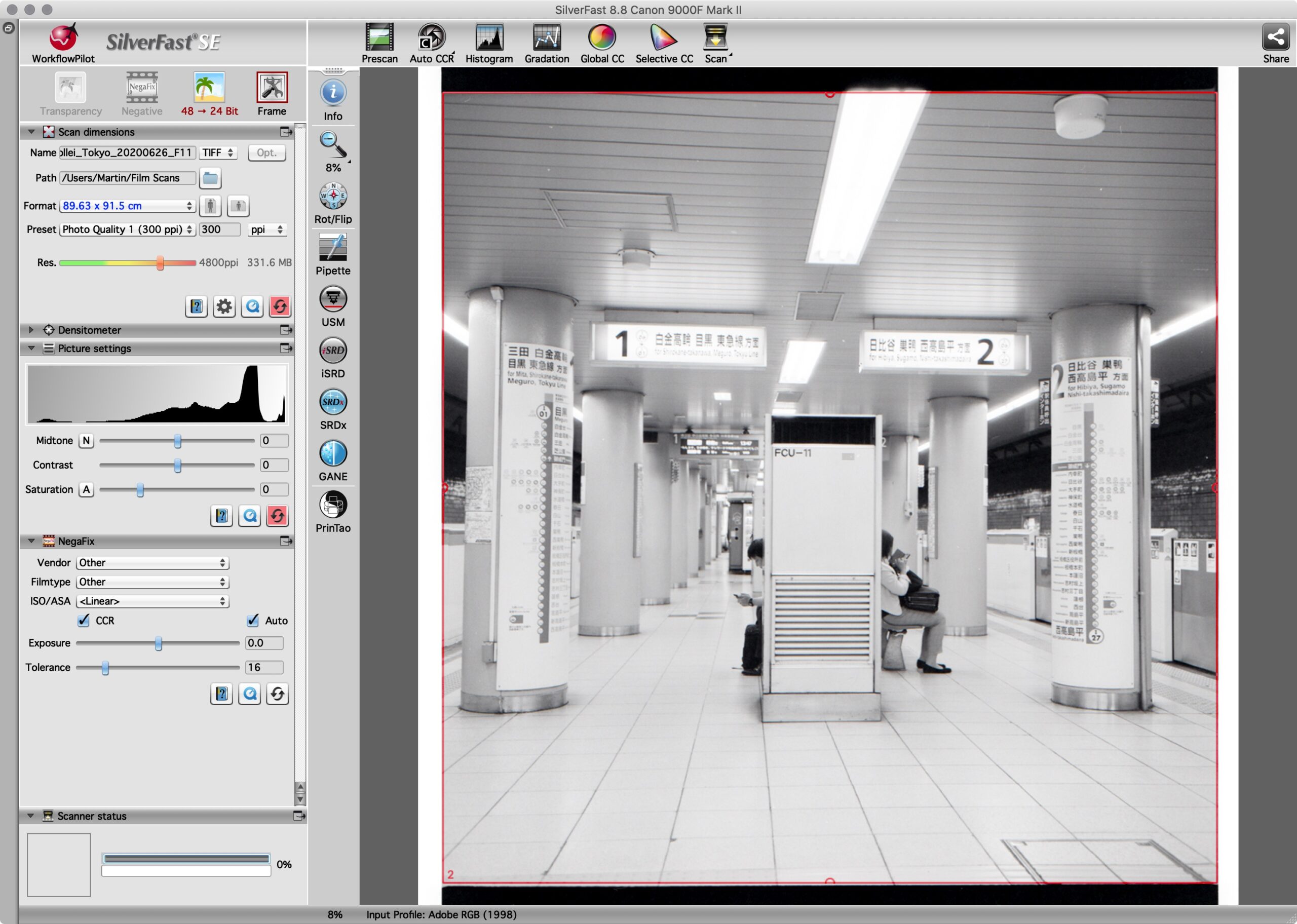

(c) In the “General” tab: there are four drop-down menus. (b) I arrange the program layout as shown in Inset A1, with Negafix and the Densitometer on my second monitor, to maximize screen space for Landscape-oriented images on my primary monitor.

(a) Turn on the scanner before opening Silverfast, otherwise the program won’t recognize the scanner. The list below simply tells you what I do to get this program working as I like it. Recall, there are no IT8 targets or ICC calibration possible for the scanner when using this medium instead there is “Negafix”, which converts the scanned negative data to positive with about right colour and luminosity, as discussed below. For sake of brevity (but unfortunately it remains not too brief!) and practicality, this is a “do this, do that” discussion with little surrounding commentary, confined only to the subject matter of this article – colour negatives. As I only know it from the operational experience of my scanner, that information will have to suffice here, but your mileage may vary. Hence there could be some differences between how Silverfast operates with my scanner versus others. Unlike Vuescan, the same “version” of Silverfast is issued in an edition customized to each scanner model – and interestingly enough – at difference prices depending on the scanner. Users new to Silverfast will find it hugely lessens an otherwise steep learning curve. This discussion is the digest of much reading and trial, error and head-scratching.


 0 kommentar(er)
0 kommentar(er)
